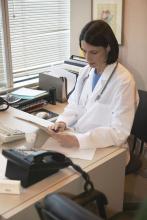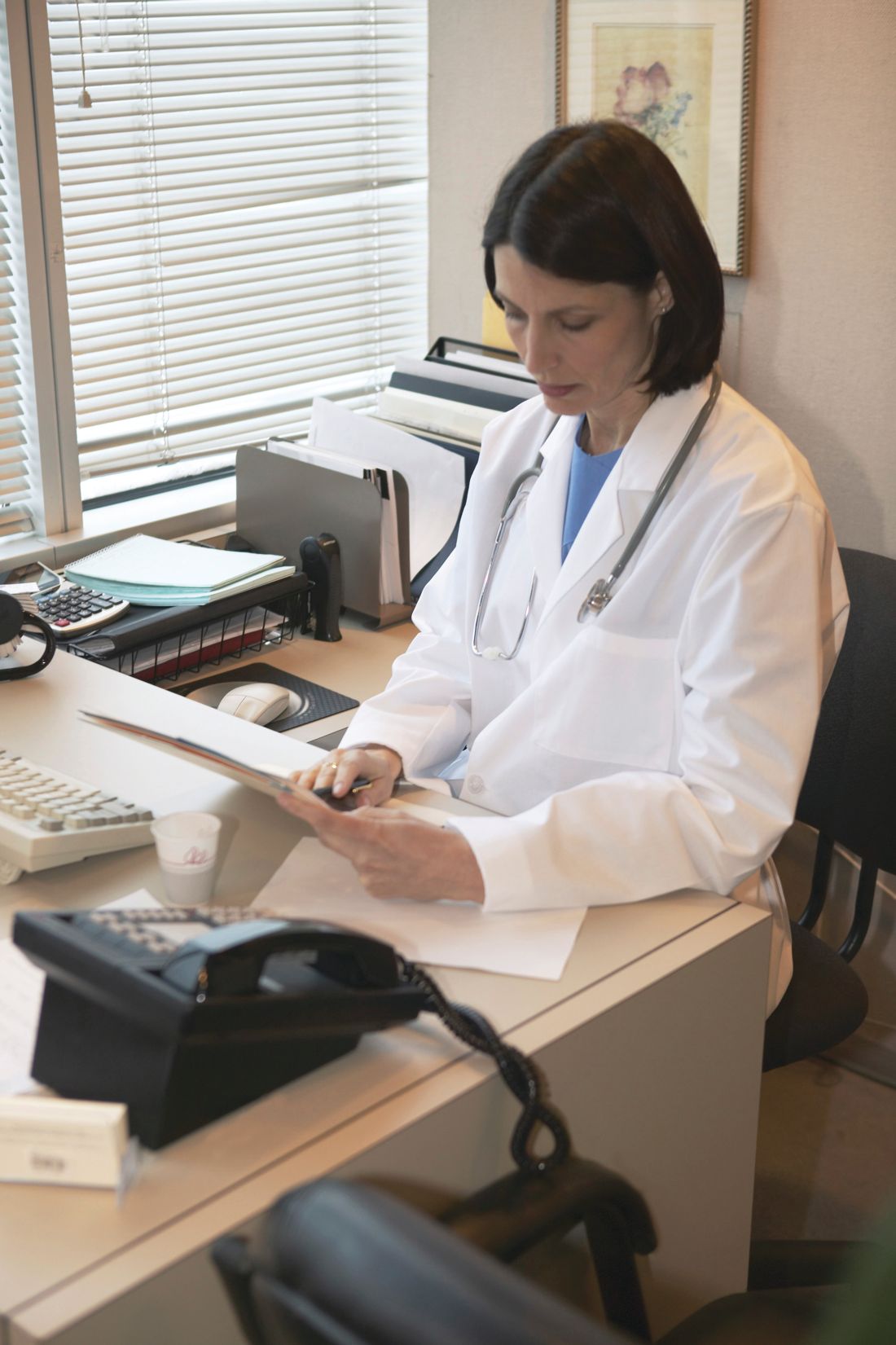User login
The Centers for Medicare & Medicaid Services survey period is upon us, and it’s time for dermatologists in nine test states to act.
In my April column, I discussed the CMS survey, which is intended to gather data on when follow-up visits for surgical procedures take place. Reporting started July 1st and will continue for several months, at least, possibly for a year.
All of you in these nine test states recently received a two-page letter from CMS telling you that, if you are in a practice with fewer than 10 dermatologists, you don’t have to report. That’s correct – you don’t have to – but is not reporting in the best interest of dermatology? I contend it is not; you can and must report!
Simply put, you need to generate and append code 99024 to your claims whenever possible. The 99024 code is a “no charge” code that informs CMS you did some follow-up work, either in person or on the phone.
That’s right, generate a 99024 after every visit when you or your staff do not bill for an evaluation and management code – and whenever you, or your physician assistant, nurse practitioner, nurse, medical assistant, or receptionist even speak to a patient on the phone. Yes, phone contacts count for a 99024.
So, when you or a member of your staff call back biopsy or lab results after a procedure, or call to schedule or change a postop appointment, speak to a relative, give instructions to the visiting nurse, or provide reassurance after a procedure, you or your staff member should generate a very brief note in the chart, plug in the working diagnosis, put that 99024 in there, and make sure the billing company posts it. Some of your billing systems may require that a physician finalize the receptionist note or that you charge a penny to get the software to cooperate, but you should still put in 99024.
(And I tell you what, I am personally good to cover all the 1-cent charges that get generated and you don’t want to write off. Just have the patients send the bill to good ole “Hotsteel” here in Cincinnati!)
Some of you may say, “Hey, a skin biopsy is a 0-day global, so why report a follow-up? Here’s why. How often do you do a skin biopsy using a shave code, or without freezing an actinic keratosis? Reporting the 99024 when you call back with the biopsy results correctly documents the actinic keratosis and shave-embedded follow-up visit, so you should do it.
When you see that patient back to remove her sutures after an excision, submit the 99024.
When you see him to inject a hypertrophic scar from an electrodessication, submit the 99024.
I know we see our patients at follow-up visits and communicate with them by phone – sometimes for years after a procedure, at no charge. I hope to see hundreds of thousands of 99024 codes generated from small groups and solo dermatologists. You need to make sure these services are acknowledged and that dermatologists get credit when credit is due. The future of our specialty depends on your doing so.
Dr. Coldiron is in private practice but maintains a clinical assistant professorship at the University of Cincinnati. He cares for patients, teaches medical students and residents, and has several active clinical research projects. Dr. Coldiron is the author of more than 80 scientific letters, papers, and several book chapters, and he speaks frequently on a variety of topics. He is a past president of the American Academy of Dermatology. Write to him at [email protected].
The Centers for Medicare & Medicaid Services survey period is upon us, and it’s time for dermatologists in nine test states to act.
In my April column, I discussed the CMS survey, which is intended to gather data on when follow-up visits for surgical procedures take place. Reporting started July 1st and will continue for several months, at least, possibly for a year.
All of you in these nine test states recently received a two-page letter from CMS telling you that, if you are in a practice with fewer than 10 dermatologists, you don’t have to report. That’s correct – you don’t have to – but is not reporting in the best interest of dermatology? I contend it is not; you can and must report!
Simply put, you need to generate and append code 99024 to your claims whenever possible. The 99024 code is a “no charge” code that informs CMS you did some follow-up work, either in person or on the phone.
That’s right, generate a 99024 after every visit when you or your staff do not bill for an evaluation and management code – and whenever you, or your physician assistant, nurse practitioner, nurse, medical assistant, or receptionist even speak to a patient on the phone. Yes, phone contacts count for a 99024.
So, when you or a member of your staff call back biopsy or lab results after a procedure, or call to schedule or change a postop appointment, speak to a relative, give instructions to the visiting nurse, or provide reassurance after a procedure, you or your staff member should generate a very brief note in the chart, plug in the working diagnosis, put that 99024 in there, and make sure the billing company posts it. Some of your billing systems may require that a physician finalize the receptionist note or that you charge a penny to get the software to cooperate, but you should still put in 99024.
(And I tell you what, I am personally good to cover all the 1-cent charges that get generated and you don’t want to write off. Just have the patients send the bill to good ole “Hotsteel” here in Cincinnati!)
Some of you may say, “Hey, a skin biopsy is a 0-day global, so why report a follow-up? Here’s why. How often do you do a skin biopsy using a shave code, or without freezing an actinic keratosis? Reporting the 99024 when you call back with the biopsy results correctly documents the actinic keratosis and shave-embedded follow-up visit, so you should do it.
When you see that patient back to remove her sutures after an excision, submit the 99024.
When you see him to inject a hypertrophic scar from an electrodessication, submit the 99024.
I know we see our patients at follow-up visits and communicate with them by phone – sometimes for years after a procedure, at no charge. I hope to see hundreds of thousands of 99024 codes generated from small groups and solo dermatologists. You need to make sure these services are acknowledged and that dermatologists get credit when credit is due. The future of our specialty depends on your doing so.
Dr. Coldiron is in private practice but maintains a clinical assistant professorship at the University of Cincinnati. He cares for patients, teaches medical students and residents, and has several active clinical research projects. Dr. Coldiron is the author of more than 80 scientific letters, papers, and several book chapters, and he speaks frequently on a variety of topics. He is a past president of the American Academy of Dermatology. Write to him at [email protected].
The Centers for Medicare & Medicaid Services survey period is upon us, and it’s time for dermatologists in nine test states to act.
In my April column, I discussed the CMS survey, which is intended to gather data on when follow-up visits for surgical procedures take place. Reporting started July 1st and will continue for several months, at least, possibly for a year.
All of you in these nine test states recently received a two-page letter from CMS telling you that, if you are in a practice with fewer than 10 dermatologists, you don’t have to report. That’s correct – you don’t have to – but is not reporting in the best interest of dermatology? I contend it is not; you can and must report!
Simply put, you need to generate and append code 99024 to your claims whenever possible. The 99024 code is a “no charge” code that informs CMS you did some follow-up work, either in person or on the phone.
That’s right, generate a 99024 after every visit when you or your staff do not bill for an evaluation and management code – and whenever you, or your physician assistant, nurse practitioner, nurse, medical assistant, or receptionist even speak to a patient on the phone. Yes, phone contacts count for a 99024.
So, when you or a member of your staff call back biopsy or lab results after a procedure, or call to schedule or change a postop appointment, speak to a relative, give instructions to the visiting nurse, or provide reassurance after a procedure, you or your staff member should generate a very brief note in the chart, plug in the working diagnosis, put that 99024 in there, and make sure the billing company posts it. Some of your billing systems may require that a physician finalize the receptionist note or that you charge a penny to get the software to cooperate, but you should still put in 99024.
(And I tell you what, I am personally good to cover all the 1-cent charges that get generated and you don’t want to write off. Just have the patients send the bill to good ole “Hotsteel” here in Cincinnati!)
Some of you may say, “Hey, a skin biopsy is a 0-day global, so why report a follow-up? Here’s why. How often do you do a skin biopsy using a shave code, or without freezing an actinic keratosis? Reporting the 99024 when you call back with the biopsy results correctly documents the actinic keratosis and shave-embedded follow-up visit, so you should do it.
When you see that patient back to remove her sutures after an excision, submit the 99024.
When you see him to inject a hypertrophic scar from an electrodessication, submit the 99024.
I know we see our patients at follow-up visits and communicate with them by phone – sometimes for years after a procedure, at no charge. I hope to see hundreds of thousands of 99024 codes generated from small groups and solo dermatologists. You need to make sure these services are acknowledged and that dermatologists get credit when credit is due. The future of our specialty depends on your doing so.
Dr. Coldiron is in private practice but maintains a clinical assistant professorship at the University of Cincinnati. He cares for patients, teaches medical students and residents, and has several active clinical research projects. Dr. Coldiron is the author of more than 80 scientific letters, papers, and several book chapters, and he speaks frequently on a variety of topics. He is a past president of the American Academy of Dermatology. Write to him at [email protected].


